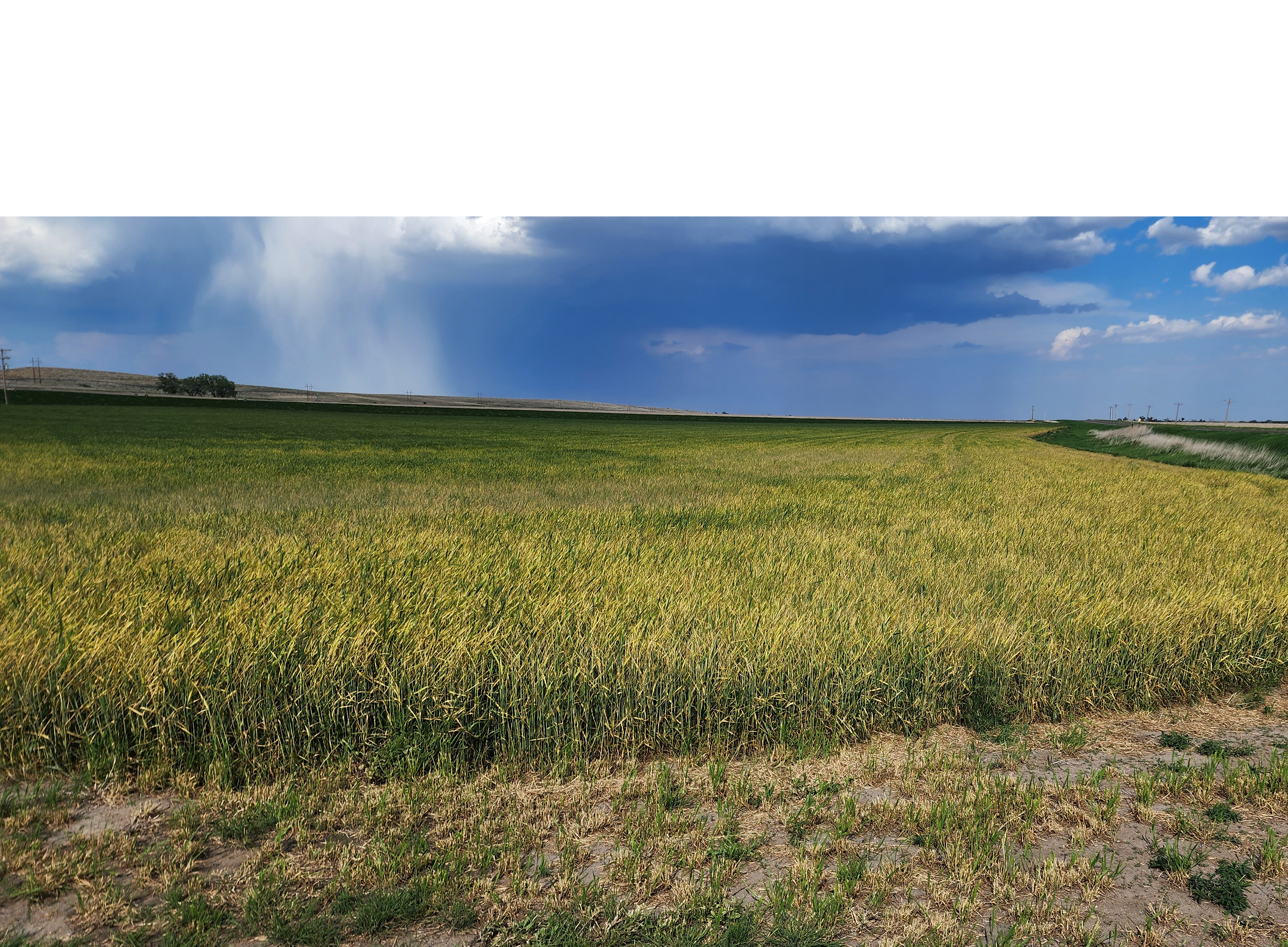Content developed by John Watkins, Emeritus Professor of Plant Pathology, and updated by Stephen Wegulo, Extension Plant Pathologist
Pathogen
The wheat soilborne mosaic virus (WSBMV) is a hollow, rigid rod of 2 principal lengths, 140, and 280 mm. Particles of both sizes are necessary for infection. It is a member of the Furovirus group and exists in several strains. WSBMV survives in the soil in association with the resting spores of Polymyxa graminis, a root-infecting fungus (zoosporic protozoan?). The resting spores of the vector germinate to form mobile zoospores, which swim in films of moisture in the soil. They infect the root hairs of the host plant and become colonized in the root cortex. The WSBMV infects the plant after the zoospores penetrate the root.

Disease Symptoms
The virus-induced symptoms range from none to a yellow/pale green mosaic mottling and streaking of individual leaves. Infected susceptible plants are stunted to varying degrees. Leaf symptoms first appear in early spring, persist until warmer weather, and then diminish. Symptom expression is favored by temperatures below 65° F. Field symptoms appear as irregular patches of yellow or pale green wheat. The pattern often conforms to low, wet areas or drainage paths and areas around old building sites.



Favorable Weather Conditions
Infections occurring in the fall are the most important for disease development. Soil temperatures of 50°F to 60°F favor infection of the roots by P. graminis. Air temperatures of less than 65°F and short day lengths favor multiplication and systemic spread of the virus in the wheat plant. Extended periods of temperatures below 65°F in spring enhance symptom development. Temperatures above 75°F subdue virus multiplication and symptom expression.
Management
Growing resistant or tolerant varieties is the most effective method of control. Consult the current "Nebraska Seed Book for Fall Planted Crops" available from the University of Nebraska-Lincoln, Nebraska Crop Improvement Association, 267 Plant Sciences Hall, Lincoln, NE 68583-0911 for a list of wheat varieties and their disease reaction. Their web site is http://www.unl.edu/ncia.
Planting winter wheat at the optimum date for a given geographic area also reduces the risk for WSBM.
Avoid early planting of winter wheat.








